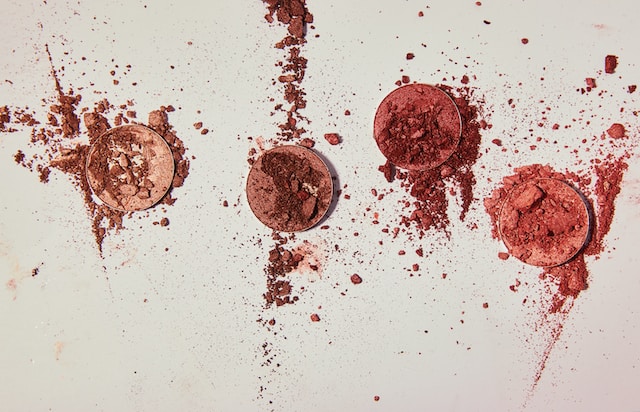Contents
- 1 Prepping Your Skin: Essential Steps for a Flawless Makeup Application
- 2 Understanding Your Skin Type: Tailoring Your Makeup Routine for Best Results
- 3 Choosing the Right Foundation: Matching Your Skin Tone and Texture
- 4 Concealing Imperfections: Tips for Covering Blemishes and Dark Circles
- 5 Enhancing Your Features: Contouring and Highlighting Techniques for a Sculpted Look
- 6 Creating the Perfect Base: Setting Powders and Sprays for Long-Lasting Makeup
- 7 Mastering Eye Makeup: Techniques for Flawless Eyeshadow Application
- 8 Achieving Luscious Lips: Tips for a Beautiful and Long-Lasting Lip Color
- 9 Making Your Makeup Last: Tips for Touch-Ups and Extending the Wear
- 10 Removing Your Makeup: Essential Steps for a Proper Skincare Routine
Prepping Your Skin: Essential Steps for a Flawless Makeup Application
Before applying makeup, it is crucial to prep your skin to ensure a flawless finish. The first step in prepping your skin is to cleanse it thoroughly. Use a gentle cleanser that is suitable for your skin type, as harsh cleansers can strip away essential oils and leave your skin dry. Gently massage the cleanser onto your face in circular motions, paying extra attention to areas with excess oil or makeup residue. Rinse off with lukewarm water and pat your skin dry with a soft towel.
Once your skin is clean, the next step is to exfoliate. This helps to remove dead skin cells and unclog pores, allowing for a smoother application of makeup. Choose a gentle exfoliator that suits your skin type and massage it onto your damp face in gentle circular motions. Avoid scrubbing too hard, as this can cause irritation. Rinse thoroughly and pat dry. Remember to exfoliate your skin at least once or twice a week, depending on your skin’s needs. Following these essential steps will create the perfect canvas for your makeup and ensure a flawless application.
• Cleanse your skin thoroughly using a gentle cleanser suitable for your skin type
• Gently massage the cleanser onto your face in circular motions, paying attention to areas with excess oil or makeup residue
• Rinse off with lukewarm water and pat dry with a soft towel
• Exfoliate your skin to remove dead skin cells and unclog pores
• Choose a gentle exfoliator that suits your skin type and massage it onto damp face in gentle circular motions
• Avoid scrubbing too hard to prevent irritation
• Rinse thoroughly and pat dry
By following these essential steps of cleansing and exfoliating, you will create the perfect canvas for flawless makeup application.
Understanding Your Skin Type: Tailoring Your Makeup Routine for Best Results
Understanding your skin type is vital in tailoring your makeup routine for the best results. By knowing your skin type, whether it’s dry, oily, combination, or sensitive, you can choose the right products and techniques that will enhance your natural beauty. Each skin type requires specific attention and care, and understanding these differences can make a significant difference in the way your makeup looks and feels on your skin.
For those with dry skin, it’s essential to focus on hydrating and nourishing the skin before applying makeup. Look for moisturizers that are rich in emollients and humectants to lock in moisture and provide a smooth base for your foundation. Avoid matte or powdery formulas, as they can further dry out the skin. Instead, opt for lightweight, dewy foundations that give a luminous finish. Investing in a good hydrating primer can also help to keep your makeup looking fresh and prevent it from clinging to any dry patches on your skin.
• Use moisturizers rich in emollients and humectants
• Avoid matte or powdery formulas
• Opt for lightweight, dewy foundations
• Invest in a hydrating primer
For those with oily skin, it’s important to focus on controlling excess oil and maintaining a matte finish throughout the day. Look for oil-free moisturizers that won’t clog your pores or contribute to further oiliness. Choose foundations that are labeled as “oil-free” or “matte” to help absorb excess oil and keep shine at bay. Setting your makeup with a translucent powder can also help control shine and prolong the wear of your foundation. Be cautious with heavy creams or thick formulas, as they can feel greasy on oily skin.
• Use oil-free moisturizers
• Choose foundations labeled as “oil-free” or “matte”
• Set makeup with translucent powder
• Avoid heavy creams or thick formulas
Combination skin requires a balanced approach when it comes to makeup application. This skin type typically has areas that are dry and areas that are oily, so it’s important to address both concerns. Focus on using lightweight products that won’t exacerbate either issue. Consider using different types of foundation on different parts of your face – a hydrating formula for dry areas and an oil-absorbing formula for oily areas.
• Use lightweight products
• Consider using different types of foundation for different areas
Sensitive skin needs extra care when choosing makeup products. Look for hypoallergenic options that are free from potential irritants such as fragrance, dyes, and harsh chemicals. Test new products on a small patch of skin before applying them all over your face to check for any adverse reactions. Mineral-based foundations tend to be gentle on sensitive skin while still providing coverage.
• Look for hypoallergenic options
• Test new products before applying all over face
• Consider mineral-based foundations
Understanding your specific skin type and its unique needs is crucial for achieving the best results with your makeup. By selecting products and techniques that cater to your skin’s requirements, you can enhance your natural beauty and ensure a flawless finish. Don’t be afraid to experiment and try different products until you find the perfect combination that works for you. Remember, everyone’s skin is different, so what works for someone else may not work for you. Embrace your individuality and embrace the journey of finding what makes you feel confident and beautiful in your own skin.
• Understand your specific skin type
• Select products that cater to your skin’s needs
• Experiment and try different products
• Embrace your individuality
Choosing the Right Foundation: Matching Your Skin Tone and Texture
One of the most important aspects of achieving a flawless makeup look is choosing the right foundation that matches your skin tone and texture. Foundation acts as a base for your makeup, providing coverage and helping to even out your complexion. However, with so many options available, it can be overwhelming to find the perfect match for your skin.
To choose the right foundation, start by determining your skin tone. This can be done by identifying whether your undertones are cool, warm, or neutral. Cool undertones have hints of pink or blue, warm undertones have hints of yellow or peach, while neutral undertones have a balance of both. Once you have identified your undertones, look for foundation shades that complement them. It’s important to test the foundation on your jawline or wrist to ensure it blends seamlessly with your skin tone. Additionally, consider your skin type – whether it’s dry, oily, or combination – as different foundations are formulated to cater to specific skin concerns.
• Cool undertones: Look for foundation shades with pink or blue undertones
• Warm undertones: Look for foundation shades with yellow or peach undertones
• Neutral undertones: Look for foundation shades that have a balance of both warm and cool tones
• Test the foundation on your jawline or wrist to ensure it blends seamlessly with your skin tone
• Consider your skin type – dry, oily, or combination – when choosing a foundation formula
that caters to specific skin concerns
Concealing Imperfections: Tips for Covering Blemishes and Dark Circles
One of the biggest challenges when it comes to makeup application is concealing imperfections such as blemishes and dark circles. These common skin concerns can often make us feel self-conscious and can be tricky to cover up effectively. However, with the right techniques and products, you can achieve a flawless complexion.
When it comes to covering blemishes, the key is to start with a good skincare routine. Cleanse your face thoroughly and apply a lightweight, oil-free moisturizer that won’t clog your pores. Next, use a color-correcting concealer that matches your skin tone to neutralize any redness or discoloration. Gently pat the concealer onto the blemish using your ring finger, as this finger exerts the least pressure. Then, blend the concealer outward until it seamlessly merges with the surrounding skin. Finish off by lightly dusting some setting powder to prevent the concealer from creasing or smudging throughout the day.
As for dark circles, the key is to brighten and hydrate the under-eye area. Start by applying a hydrating eye cream that contains ingredients like hyaluronic acid or cucumber extract to plump up the skin and reduce puffiness. Then, use a peach-toned corrector to cancel out the bluish undertones of the dark circles. Apply the corrector in a light, tapping motion with your ring finger, focusing on the inner corners and under-eye area. Follow up with a liquid concealer that matches your skin tone and gently blend it into the skin using a small fluffy brush or your finger. Finally, set the concealer with a translucent powder to prevent it from settling into fine lines and to ensure long-lasting coverage.
Remember, practice is key when it comes to concealing imperfections. With time and experimentation, you’ll find the right combination of techniques and products that work best for you. So, don’t be discouraged if it takes a few tries to achieve the flawless coverage you desire.
• Start with a good skincare routine: cleanse and moisturize your face
• Use a color-correcting concealer to neutralize redness or discoloration
• Pat the concealer onto blemishes using your ring finger for gentle application
• Blend the concealer outward until it seamlessly merges with the surrounding skin
• Set the concealer with setting powder to prevent creasing or smudging throughout the day
For dark circles:
• Apply a hydrating eye cream to plump up the under-eye area and reduce puffiness
• Use a peach-toned corrector to cancel out bluish undertones of dark circles
• Tap on the corrector in a light motion, focusing on inner corners and under-eye area
• Follow up with a liquid concealer that matches your skin tone and blend it in gently
using a small fluffy brush or finger.
• Set the concealer with translucent powder to prevent settling into fine lines
Remember:
– Practice is key when it comes to concealing imperfections
– Experimentation will help you find what works best for you
– Don’t be discouraged if it takes time to achieve flawless coverage
Enhancing Your Features: Contouring and Highlighting Techniques for a Sculpted Look
Contouring and highlighting are essential techniques in makeup application that can transform your features and create a sculpted look. By strategically using different shades and finishes, you can add dimension and definition to your face.
Contouring involves using a matte bronzer or contour shade to create shadows and define areas such as the hollows of your cheeks, your temples, and the sides of your nose. This technique helps to minimize certain areas and create the illusion of a more sculpted face shape. On the other hand, highlighting uses a lighter shade or a product with a slight shimmer to bring forward areas that you want to emphasize, such as the high points of your cheekbones, the bridge of your nose, and your brow bone. This creates a luminous effect and enhances your natural features.
Remember, blending is key when it comes to contouring and highlighting. Use a fluffy brush or a damp beauty sponge to seamlessly blend the products into your skin for a natural and flawless finish. By mastering these techniques, you can achieve a sculpted look that enhances your features and adds depth to your overall makeup look.
• Contouring involves using a matte bronzer or contour shade to create shadows and define areas such as the hollows of your cheeks, temples, and sides of your nose.
• Highlighting uses a lighter shade or product with shimmer to bring forward areas you want to emphasize like cheekbones, bridge of the nose, and brow bone.
• Blending is key for a natural finish. Use a fluffy brush or damp beauty sponge to seamlessly blend products into the skin.
• Mastering these techniques can enhance features and add depth to your overall makeup look.
Creating the Perfect Base: Setting Powders and Sprays for Long-Lasting Makeup
Setting powders and sprays are essential steps in creating the perfect base for a long-lasting makeup look. These products not only help to set your foundation in place but also control oil and shine throughout the day. Setting powders come in both loose and pressed forms, allowing you to choose the consistency that works best for your skin type. Loose powders are great for those with oily skin as they absorb excess oil and leave a matte finish. On the other hand, pressed powders are more convenient for touch-ups on the go.
When applying setting powders, it’s important to use a fluffy brush to lightly dust the product over your entire face. Focus on the areas where you tend to get oily, such as the T-zone, and make sure to blend well to avoid a cakey appearance. For a more precise application, you can also use a makeup sponge to press the powder into specific areas like under the eyes or around the nose. Once you’ve applied the powder, gently sweep away any excess with a clean brush to ensure a seamless finish.
• Setting powders and sprays are essential for a long-lasting makeup look.
• They help set foundation in place and control oil and shine throughout the day.
• Loose powders absorb excess oil and leave a matte finish, making them great for oily skin.
• Pressed powders are more convenient for touch-ups on the go.
• Use a fluffy brush to lightly dust setting powder over your entire face, focusing on oily areas like the T-zone.
• Blend well to avoid a cakey appearance.
• A makeup sponge can be used for more precise application in certain areas like under the eyes or around the nose.
• After applying setting powder, gently sweep away any excess with a clean brush.
Mastering Eye Makeup: Techniques for Flawless Eyeshadow Application
When it comes to achieving flawless eyeshadow application, it all starts with a well-prepped eye area. Before diving into your eyeshadow palette, make sure to cleanse your eyelids and apply a primer specifically designed for the eyes. This will create a smooth and even base for your eyeshadow, helping it to adhere better and last longer throughout the day. Additionally, using an eyeshadow primer can help intensify the color payoff and prevent creasing. Once your lids are prepped and primed, it’s time to select the eyeshadow shades that will complement your eye color and desired look. Opt for a mix of light, medium, and dark shades to create depth and dimension on the lids. Remember, blending is key to achieving a seamless eyeshadow look. Use a fluffy blending brush to soften harsh lines and create a smooth transition between shades.
• Cleanse your eyelids and apply an eye primer before applying eyeshadow
• Eyeshadow primer helps create a smooth base, intensifies color payoff, and prevents creasing
• Select eyeshadow shades that complement your eye color and desired look
• Choose a mix of light, medium, and dark shades for depth and dimension on the lids
• Blending is crucial for a seamless eyeshadow look
• Use a fluffy blending brush to soften harsh lines
• Create a smooth transition between shades
Achieving Luscious Lips: Tips for a Beautiful and Long-Lasting Lip Color
To achieve luscious lips with beautiful and long-lasting color, there are a few tips and tricks you can follow. Firstly, make sure to exfoliate your lips regularly. This helps remove any dead skin cells and creates a smooth canvas for your lip color. You can use a lip scrub or simply a soft toothbrush to gently massage your lips in circular motions. Remember to moisturize your lips afterwards to keep them hydrated and supple.
Next, it’s important to choose the right lip products. Opt for long-wearing lipsticks or lip stains that have a matte or satin finish. These formulas tend to last longer and have better staying power compared to glossy or creamy lip products. Additionally, consider using a lip liner to outline and fill in your lips before applying lipstick. This not only helps define your lip shape but also prevents your lip color from feathering or fading throughout the day.
By following these simple tips, you can achieve luscious lips that boast beautiful and long-lasting color. Don’t forget to exfoliate and moisturize regularly, choose the right lip products, and use a lip liner to enhance the longevity of your lip color. With these steps, you’ll have lips that are ready to make a statement all day long.
• Exfoliate your lips regularly to remove dead skin cells and create a smooth canvas for lip color
• Use a lip scrub or soft toothbrush to gently massage your lips in circular motions
• Remember to moisturize your lips afterwards to keep them hydrated and supple
• Choose long-wearing lipsticks or lip stains with matte or satin finishes for better staying power
• Consider using a lip liner to outline and fill in your lips before applying lipstick
• Lip liner helps define the shape of your lips and prevents feathering or fading throughout the day
Making Your Makeup Last: Tips for Touch-Ups and Extending the Wear
In the busy world we live in, our makeup often needs a little extra help to last throughout the day. Whether it’s a long day at the office or a night out with friends, touch-ups can make a world of difference. To ensure your makeup stays fresh and flawless, here are a few tips to help extend its wear.
Firstly, always carry a small makeup bag with you that contains essential touch-up products. This can include items like a compact powder, blotting papers, a lipstick or lip gloss, and a small brush or sponge. Having these items on hand allows you to quickly refresh your makeup throughout the day, without having to carry your entire beauty collection. Additionally, using a setting spray after applying your makeup can help it last longer. Simply spritz a fine mist over your face to help seal your look, ensuring it stays in place for hours on end. By incorporating these simple tips into your routine, you can enjoy a long-lasting and flawless makeup look no matter where your day takes you.
• Always carry a small makeup bag with essential touch-up products
• Include items like compact powder, blotting papers, lipstick or lip gloss, and a small brush or sponge
• Allows for quick refreshes throughout the day without carrying your entire beauty collection
• Use a setting spray after applying makeup to help it last longer
• Spritz a fine mist over your face to seal your look and keep it in place for hours on end
Removing Your Makeup: Essential Steps for a Proper Skincare Routine
Removing your makeup is an essential step in any proper skincare routine. It not only helps to keep your skin clean and healthy, but it also allows your skin to breathe and rejuvenate overnight. To ensure effective makeup removal, start by using a gentle cleanser or micellar water to dissolve and remove the majority of your makeup. Apply the cleanser or micellar water to a cotton pad and gently swipe it all over your face, paying extra attention to areas with heavy makeup such as your eyes and lips. Repeat this process until the cotton pad comes away clean, indicating that all traces of makeup have been effectively removed.
After removing the majority of your makeup, it’s important to follow up with a secondary cleansing step. This helps to ensure that any remaining makeup, dirt, and impurities are thoroughly removed from your skin. Use a facial cleanser that is suitable for your skin type and massage it onto damp skin using gentle, circular motions. Rinse thoroughly with lukewarm water to remove all traces of cleanser and residual makeup. Pat your skin dry with a clean towel and follow up with your regular skincare routine, including toner, moisturizer, and any additional treatments that your skin may require. By incorporating these essential steps into your routine, you can effectively remove your makeup and keep your skin glowing and healthy.
• Start by using a gentle cleanser or micellar water to dissolve and remove the majority of your makeup.
• Apply the cleanser or micellar water to a cotton pad and gently swipe it all over your face, paying extra attention to areas with heavy makeup such as your eyes and lips.
• Repeat this process until the cotton pad comes away clean, indicating that all traces of makeup have been effectively removed.
• Follow up with a secondary cleansing step using a facial cleanser suitable for your skin type.
• Massage the cleanser onto damp skin using gentle, circular motions.
• Rinse thoroughly with lukewarm water to remove all traces of cleanser and residual makeup.
• Pat your skin dry with a clean towel after rinsing.
• Follow up with toner, moisturizer, and any additional treatments that your skin may require.




